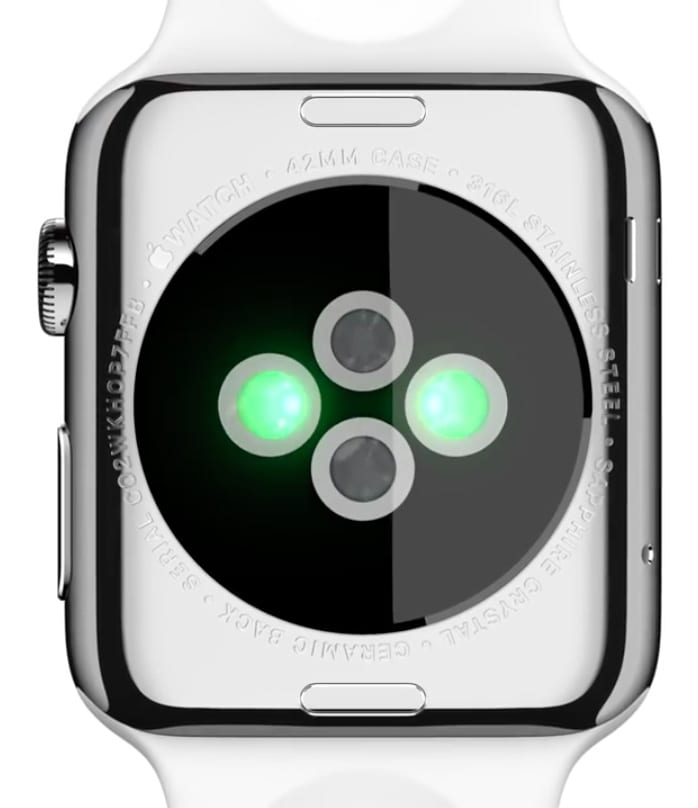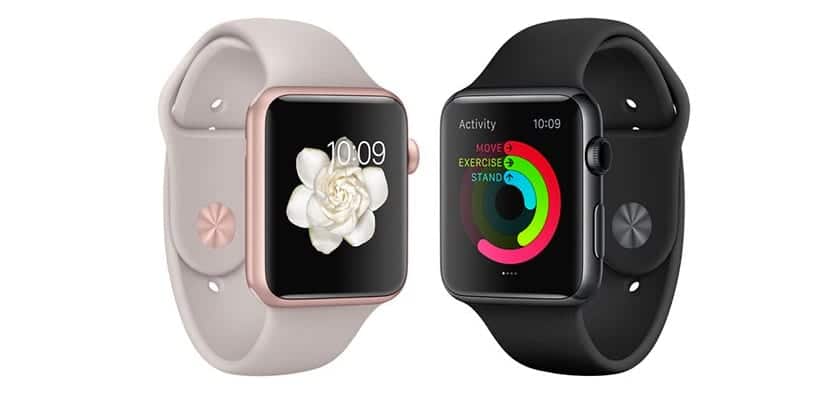
At this time, the Apple Watch finds out how many calories we burn by applying a mathematical formula using our heart rate and other values obtained with its sensors. The system used also accurately differentiates between calories burned at rest and calories burned during physical activity. But in the future, Apple Watch could be more accurate as it includes hardware to measure blood oxygen levels.
This sensor, how could it be otherwise, has been discovered by iFixit, the famous company that is responsible for gutting any device to check if a device is easy to repair and provides us with guides to disassemble and repair practically any electronic device. According to iFixit, the heart rate monitor may already be using pulse oximetry to calculate heart rate.
It is not normal that Apple does not tell us about important parts of its devices. Typically, those from Cupertino, like any other company, base their marketing campaigns on highlighting the strengths of the device in question and an oximeter seems like a component that could make the Apple Watch a more exclusive watch than it already is. .
Before the official presentation of the Apple Watch last September, some Chinese media claimed that the wearable would include sensors to measure both pulse and blood oxygen, something that we all forget or did not take into account until today. The oximeter is a sensor that, if activated with a software update (will be awaiting FDA approval), would allow the Apple Watch to measure the amount of oxygen by measuring how much infrared light is absorbed.

The oximeter detects a concentration of oxygen in the blood and can calculate the volume by the flow that it "sees" in the wrist and the difference in time between when we begin to lose oxygen and the time it takes for our pulse to increase. The time difference is the circulation time between the wrist and the hypothalamus in the brain, which is roughly a known percentage of the total length of the circulation, so that the total length of the circulation can be calculated to complete "the missing piece ”in the equation.
Pulse oximetry monitors blood perfusion to the dermis. Skin perfusion, a measurement that tells us how much blood is flowing through the skin, varies considerably from person to person and can also be affected by the environment. Having said that, the amount of oxygen in the blood of each person, together with the heart rate and the time difference, is directly related to the number of calories burned.
If this component is activated via software, the Apple Watch will be an even more precise device, something important for high-level athletes.

I already know who the volunteers (coballas) are to test the oximeter, guess what?
Yes yes iwatch buyers hahahaha
Another reason to buy the 42mm Apple watch sport, I do a lot of sports, run, bike ... etc, this would be very good for me, and if it is reliable better than better, I also have diabetes problems (not to laugh at it , it is a serious disease), and this would be very good for me, to know if I am improving, or if I eat a lot of oxygen or not ... Greetings!
Tell me you would use it to calculate breaks and schedule training sessions, well… ..but to control diabetes? You know that the problem with diabetes is the level of glucose in the blood and not oxygen, right?
Flow pulse oximetry does not yet have applications for healthy people, perhaps it would be useful for an asthmatic or a person with COPD to keep a record of their saturation under certain circumstances or in monitoring in a relapse, (but it would be better to be in a hospital being monitored , not with your watch) and as for the precision of the sensor it would be very difficult to have an adequate one, since with the thickness of the wrist it is almost impossible to have readings. As for the Apple watch, it would need an emitter and a receiver at the other end, just to mention the main thing.
Well, do not be carried away by rumors, and those who want the Apple Watch ahead, and those who don't, nope!
A little theory about blood oxygen folks ...
the VO2 (http://es.wikipedia.org/wiki/VO2_m%C3%A1x) or the maximum amount of oxygen in a person's blood, is used to calculate aerobic capacity. And this information, for people who practice sports, is very valuable. It helps you, among other things, to calculate recovery times and levels of personal training.
I think they are waiting to see what treatment they make of this information in their sports app. But the ideal is that they include this data in the API for developers, since other brands (Suuntuo, Garmin, etc.) with more experience, since they use this data (although in a simulated way) in their gps watches, could use it in specific apps for apple watch.
Carlos J, is also related a bit with o2, I also said it in case my body improves with the consumption of o2 and recovers quickly and all that regards!
People who have diabetes have part of their hemoglobin molecules glycosylated (meaning that they have part of the molecules that carry oxygen through the blood linked to glucose molecules) and the binding of these two molecules is directly proportional to the amount of glucose in blood. You're right about that.
Now comes the issue in question: If the clock tells you that you have 18% oxygen in your blood at that time ...... well, perfect, but you don't know how much of that oxygen is bound to hemoglobin with glucose or without glucose, so don't it is of absolutely no use.
If something like this worked for diabetes, finger prick meters would be gone years ago.
All the best